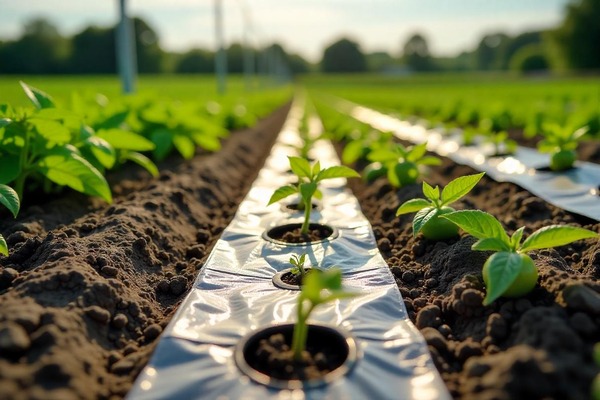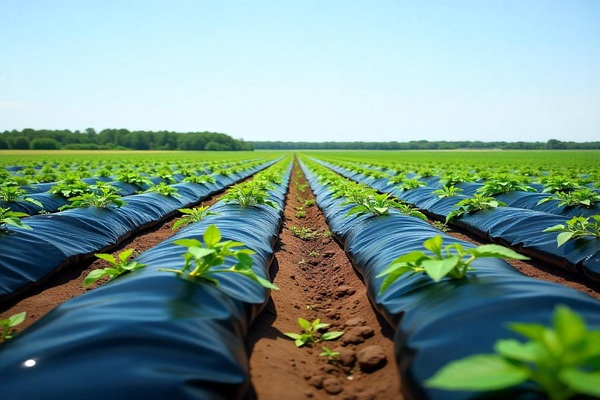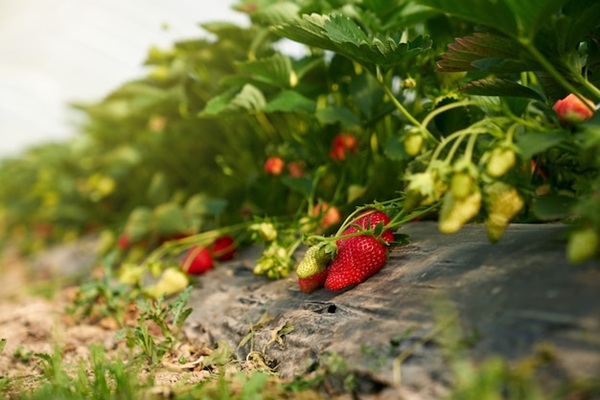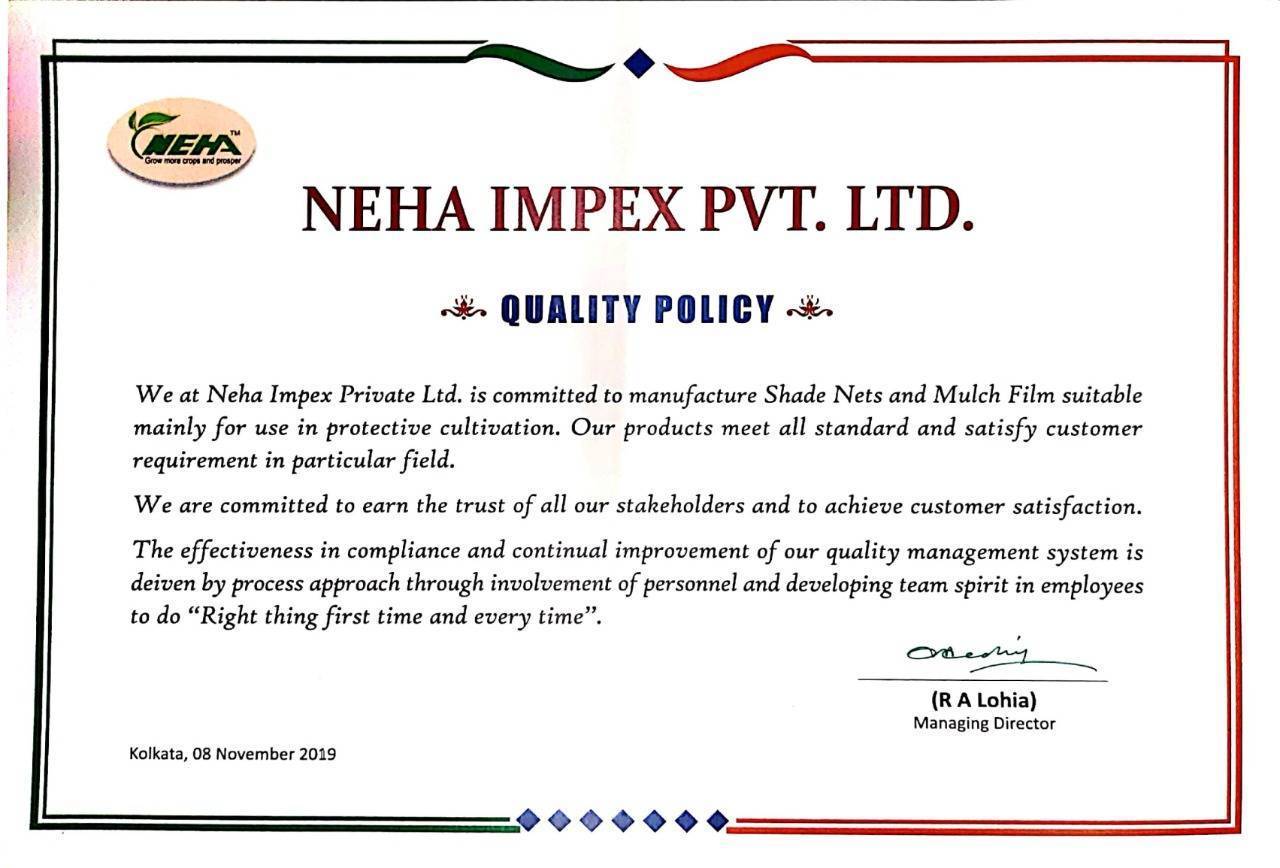
In today’s rapidly evolving agricultural sector, farmers are constantly seeking innovative solutions to boost productivity, reduce input costs, and combat climate-related challenges. One such innovative product that’s gaining momentum is the multi-layered plastic mulch film.
But what exactly are Multi-Layered Plastic Mulch Films? And why should farmers consider investing in it? Let’s know everything in detail.
What Are Multi-Layered Plastic Mulch Films?
Multi-layered plastic mulch films are specially engineered sheets made of multiple layers of plastic - each layer designed to perform a specific function. Unlike traditional single-layer mulches, these offer superior strength, durability, and functionality.
They are laid over the soil surface before or after sowing to serve as a protective layer that controls weeds, regulates soil temperature, retains moisture, and even reflects pests away in some cases. Each layer in the film does a specific job.
- A black top layer blocks sunlight (for weed control).
- A silver bottom layer reflects heat and repels insects.
- A middle layer gives strength to avoid tearing.
When combined, these layers make a powerful tool for growers.
Why Multi-Layered Mulch Films Are A Smart Investment?
1. Superior Weed Control
The films act as a physical barrier, preventing sunlight from reaching the soil and stopping weeds from growing. This reduces or eliminates the need for chemical sprays, which means lower input costs and healthier crops.
2. Water Conservation & Better Irrigation Efficiency
With water becoming an increasingly scarce resource, these films help retain soil moisture by reducing evaporation. This means less frequent irrigation, saving both water and energy - especially important for drip irrigation users.
3. Enhanced Crop Yield & Quality
By regulating soil temperature, the films create an optimal micro-climate around the roots. This leads to uniform growth, better root development, and higher-quality produce - which fetches better prices in the market.
4. Protection Against Soil-Borne Pests and Diseases
Manufacturers design some films with reflective layers that deter harmful insects like aphids and whiteflies. Others come with UV stabilizers that enhance longevity and resist degradation.
5. Customizable and Crop-Specific Solutions
Manufacturers now offer a range of options: black, silver, white, transparent, or biodegradable films - each tailored to specific crops (like tomatoes, cucumbers, strawberries, etc.) and climates.
6. Strong, Durable & Season-Long Protection
Made with high-quality materials, these films are tough enough to handle full crop cycles without tearing or breaking down. That means less replacement, less waste, and more peace of mind for you.
7. Saves You Money in the Long Run
By reducing the need for manual weeding, pesticide sprays, and frequent watering, these films lower your input costs. Plus, healthier crops grow faster and better - which means more profit per acre.
Does Multi-layered Plastic Mulch Films are Eco-friendly?
Some companies offer biodegradable multi-layered films that break down naturally after use, reducing plastic waste, making it a sustainable choice.
What Crops Are These Multi-Layered Films Used For?
- Vegetables (Tomato, Chili, Capsicum, etc.)
Farmers growing vegetables love mulch films because they keep the soil warm and moist - just what veggies need to grow faster and healthier. They also stop weeds from stealing nutrients, which means bigger yields and better quality crops.
- Fruits (Melon, Watermelon, Strawberry, etc.)
For fruit crops, especially ones that grow close to the ground, mulch films are a game-changer. They keep the fruits clean, disease-free, and protected from wet soil. Plus, by reflecting sunlight or trapping heat, they help fruits ripen more evenly.
- Flowers
In floriculture, appearance is everything. Mulch films help flowers grow with consistent color and size, reduce weed growth, and ensure better moisture control, leading to high-quality blooms that are market-ready.
- Nurseries & Greenhouses
These controlled environments use mulch films to maintain ideal soil temperature and moisture levels for seedlings. It helps young plants grow stronger and reduces the need for pesticides by repelling insects naturally.
- Commercial Farms with Drip Irrigation
When paired with drip irrigation, mulch films maximize water use efficiency. The water reaches the roots directly, while the film prevents evaporation - a smart solution for large farms looking to save costs and boost productivity.
What Are Multi-Layered Mulch Films Made Of?
These films are made from LDPE (Low-Density Polyethylene) - a flexible, durable plastic that's safe for crops. Some newer versions even use biodegradable materials, making them eco-friendly.
To make them work better in the field, manufacturers mix in:
- UV Stabilizers – to prevent the film from cracking or breaking under harsh sunlight.
- Color Pigments – black, silver, white, red, etc., depending on crop and climate needs.
- Special Additives – to boost strength, flexibility, or even repel pests.
Multi-layered plastic mulch films are more than just crop covers - they’re a smart investment for any modern farm. From conserving water to improving yield and crop quality, these films help farmers grow better, faster, and more profitably. If you want long-term results with fewer inputs, it’s time to switch to smarter farming.
If you’re looking for durable and customizable multi-layered mulch films, Neha Mulch Film offers high-quality, UV-stabilized, and biodegradable options built to last all season long.
Partner with us to boost your farm’s productivity.
Read More: Mulch Film And Climate Change: How It Helps Farmers Adapt







